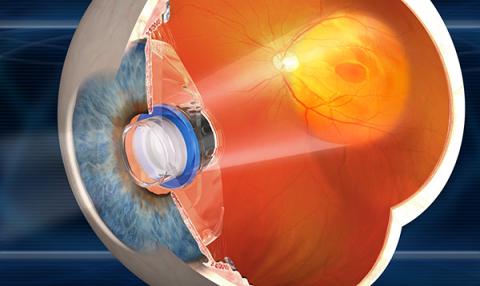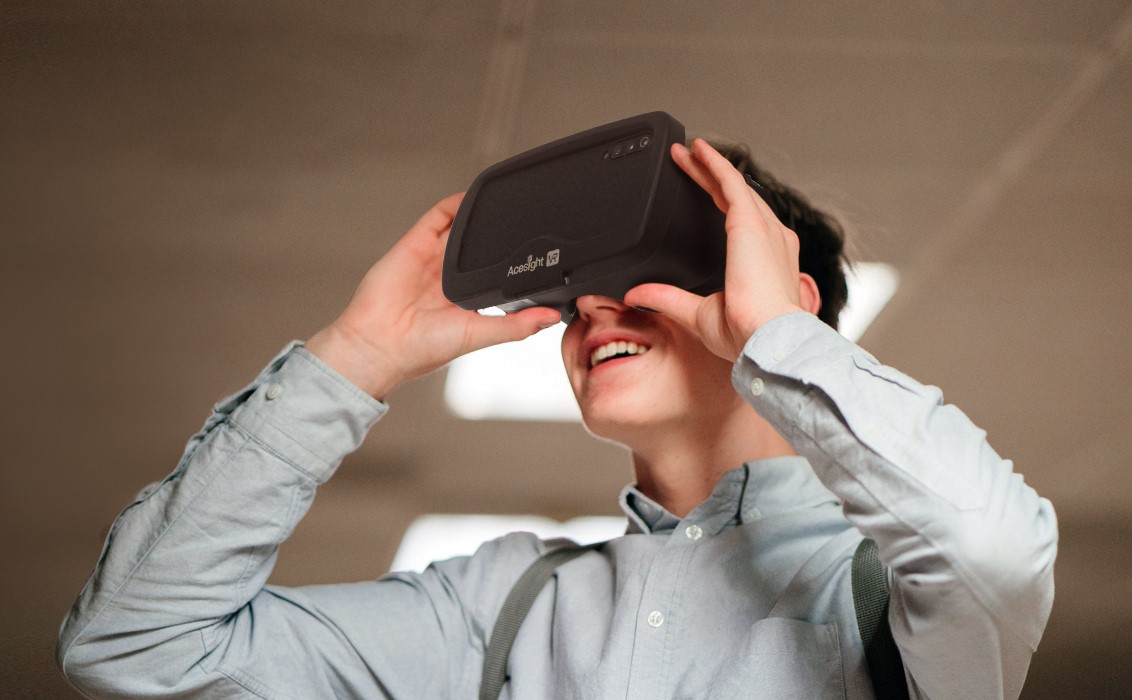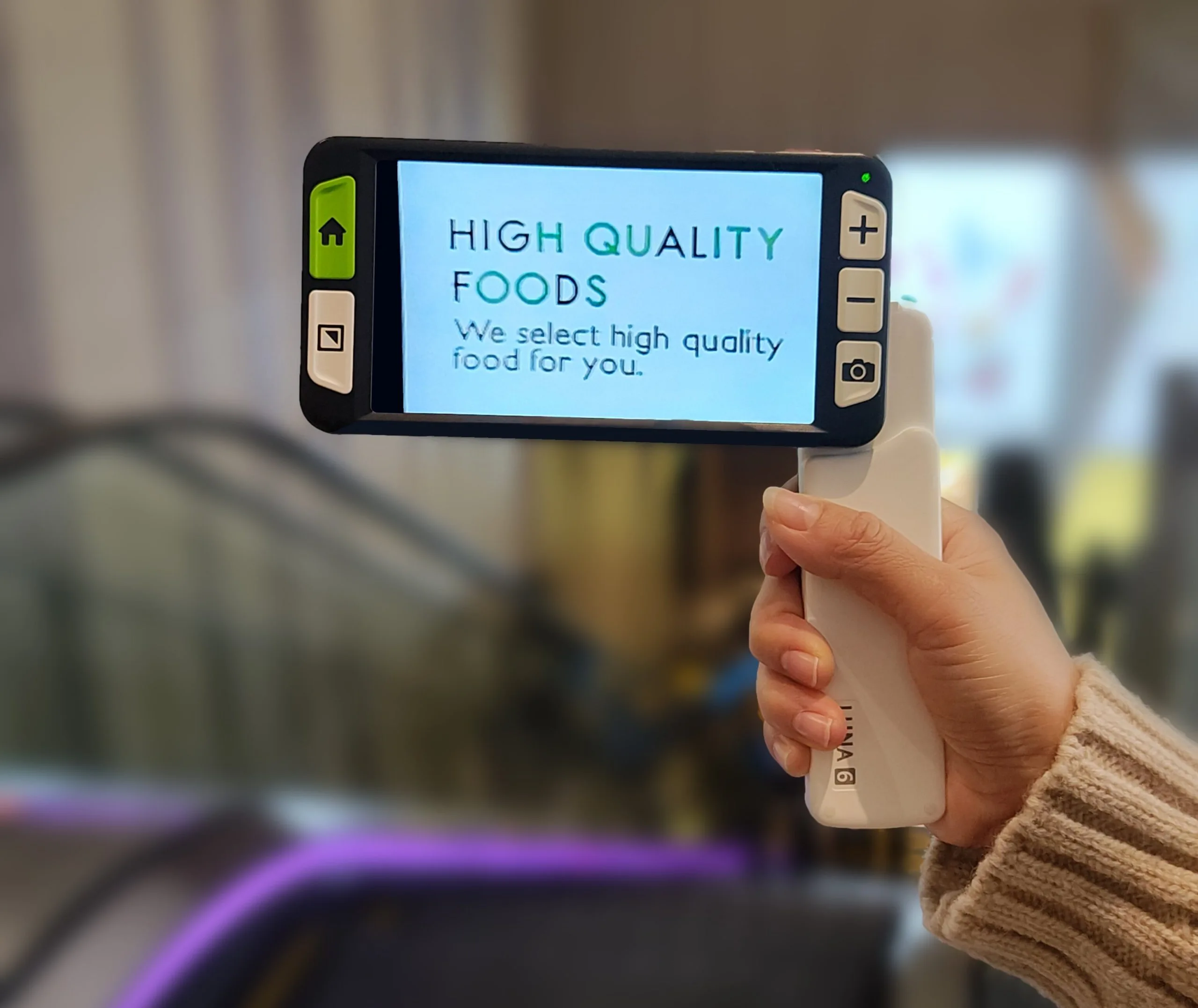

Age-related Macular Degeneration (AMD) is one of the leading causes of vision loss among individuals aged 50 and older, significantly affecting daily activities such as reading, driving, and facial recognition. With the global population aging, the prevalence of AMD is steadily increasing. As of 2024, approximately 11 million people in the United States are affected by AMD, accounting for about 12% of the population aged 50 and older. In the U.S., AMD is the primary cause of visual impairment, particularly among Caucasian elderly individuals, where the condition accounts for over 50% of low vision cases. By 2040, the number of AMD patients worldwide is projected to reach 288 million (Bourne et al., 2020). This rising prevalence has driven the rapid advancement of assistive technology to enhance the independence and overall quality of life of AMD patients.
With advancements in technology, various smart devices have emerged as effective tools to assist AMD patients. These devices range from retinal implants to wearable technology, significantly improving visual function and daily accessibility.
Retinal Implants
 Retinal implants, also known as visual prostheses, are implantable devices designed to restore partial vision in patients who have lost sight due to retinal diseases such as AMD. These implants work by electrically stimulating the remaining retinal neurons, allowing patients to perceive light and simple objects. Current clinical trials focus on three types of retinal implants: epiretinal, subretinal, and suprachoroidal implants (Hahn & Marmor, 2021). Although these devices offer limited resolution, they help AMD patients detect movement, shapes, and light intensity, thereby improving their ability to navigate their surroundings. (Figure from The Argus® II Retinal Prosthesis System. © Second Sight.)
Retinal implants, also known as visual prostheses, are implantable devices designed to restore partial vision in patients who have lost sight due to retinal diseases such as AMD. These implants work by electrically stimulating the remaining retinal neurons, allowing patients to perceive light and simple objects. Current clinical trials focus on three types of retinal implants: epiretinal, subretinal, and suprachoroidal implants (Hahn & Marmor, 2021). Although these devices offer limited resolution, they help AMD patients detect movement, shapes, and light intensity, thereby improving their ability to navigate their surroundings. (Figure from The Argus® II Retinal Prosthesis System. © Second Sight.)
Photovoltaic Retinal Prostheses
Photovoltaic retinal prostheses represent a new type of subretinal implant that restores vision by electrically stimulating inner retinal neurons, particularly bipolar cells. These implants do not require external batteries or wiring, as they are powered by near-infrared light transmitted from augmented reality glasses. Clinical trials indicate that patients using these implants can recognize letters and patterns, achieving resolution levels close to the implant’s pixel size (Cohen & Bressler, 2020).
Implantable Miniature Telescopes (IMTs)
 The implantable miniature telescope (IMT) is a tiny optical device surgically implanted into the eye, providing 2.2x to 2.7x magnification. The IMT helps AMD patients regain central vision by projecting magnified images onto healthier portions of the retina, allowing them to perform tasks such as reading and watching television. Studies have shown that IMTs significantly enhance visual acuity, leading to improved independence and daily functionality (Harman & Stout, 2019).(Figure courtesy of VisionCare Ophthalmic Technologies)
The implantable miniature telescope (IMT) is a tiny optical device surgically implanted into the eye, providing 2.2x to 2.7x magnification. The IMT helps AMD patients regain central vision by projecting magnified images onto healthier portions of the retina, allowing them to perform tasks such as reading and watching television. Studies have shown that IMTs significantly enhance visual acuity, leading to improved independence and daily functionality (Harman & Stout, 2019).(Figure courtesy of VisionCare Ophthalmic Technologies)
Wearable Technology
 Wearable technology, such as smart glasses and voice-assisted devices, is becoming an essential assistive tool for AMD patients. Smart glasses use cameras to capture the environment, magnify text and objects, and display enhanced images on lenses. For example, Zoomax’s VR glasses expand the field of view, enabling AMD patients to perceive clearer images and improve mobility. Additionally, voice-assisted smart assistants like Amazon Alexa and Google Assistant help AMD patients perform daily tasks using voice commands, making activities such as reading emails, setting reminders, and navigating their surroundings more accessible.
Wearable technology, such as smart glasses and voice-assisted devices, is becoming an essential assistive tool for AMD patients. Smart glasses use cameras to capture the environment, magnify text and objects, and display enhanced images on lenses. For example, Zoomax’s VR glasses expand the field of view, enabling AMD patients to perceive clearer images and improve mobility. Additionally, voice-assisted smart assistants like Amazon Alexa and Google Assistant help AMD patients perform daily tasks using voice commands, making activities such as reading emails, setting reminders, and navigating their surroundings more accessible.
AI-Powered Magnification Software
AI-powered magnification software integrated into smartphones, tablets, and computers provides real-time text-to-speech conversion, text enlargement, and contrast enhancement. These applications, such as Microsoft Seeing AI and Voice Dream Reader, like Zoomax Snow Pad and Snow 12,allow AMD patients to engage with digital content more easily. Research suggests that AI-enhanced screen readers and speech-to-text technology improve reading efficiency and enhance overall digital accessibility for visually impaired individuals (Chong & Liew, 2018).

Handheld Electronic Magnifiers
Devices like the Zoomax Luna S and Zoomax Luna 6 are handheld electronic magnifiers that assist individuals with vision impairments in reading printed text or viewing images. These devices magnify content such as books, newspapers, and on-screen material, displaying it on high-contrast screens, making it easier for AMD (Age-related Macular Degeneration) patients to read and view materials.
Remote Patient Monitoring (RPM)
Remote Patient Monitoring (RPM) devices can continuously track the vision changes of AMD patients and transmit data to healthcare providers, enabling remote diagnosis and treatment recommendations. This technology is particularly beneficial for patients with mobility issues or those living in remote areas.
Artificial Intelligence (AI) in Visual Assistance
Artificial Intelligence (AI) is playing an increasingly important role in managing AMD. For example, AI can analyze patients’ retinal images to detect early signs of AMD and provide personalized vision assistance features. Additionally, voice-assisted AI, such as Siri or Alexa, can help vision-impaired individuals with daily tasks, such as reading text, obtaining weather information, or managing schedules.
Brain-Computer Interface (BCI)
Brain-Computer Interface (BCI) technology allows AMD patients to control devices like smart glasses or computers using brain signals alone. While still in the research phase, this technology holds great potential for restoring independence to patients with severe vision loss.
Melatonin and AMD
Research suggests that melatonin may help AMD patients with retinal health. Melatonin not only regulates circadian rhythms but also has antioxidant and anti-inflammatory properties, which could help slow the degeneration of retinal cells. Although further research is needed, some experts recommend that AMD patients consider melatonin supplementation under medical supervision.
Conclusion
The rapid evolution of smart technology is offering new hope to AMD patients by improving their quality of life, independence, and accessibility. From retinal implants to wearable technology, these assistive devices empower visually impaired individuals to navigate the world with greater confidence. As advancements in artificial intelligence, augmented reality, and biomedical engineering continue, the future holds even more innovative solutions for AMD patients. The integration of AI-driven tools, voice-activated systems, and wearable smart glasses is expected to redefine low vision rehabilitation, allowing AMD patients to lead more independent lives.
FAQs:
What is Age-related Macular Degeneration (AMD) and how does it impact daily life?
AMD is one of the leading causes of vision loss among people aged 50 and older. It significantly affects daily activities such as reading, driving, and facial recognition. In the U.S., approximately 11 million individuals (about 12% of those over 50) are affected, with AMD accounting for over 50% of low vision cases among Caucasian elderly individuals. Globally, the number of patients is projected to reach 288 million by 2040.
What advanced technologies are currently available to improve vision and quality of life for AMD patients?
A range of smart devices is available, including retinal implants, photovoltaic retinal prostheses, implantable miniature telescopes (IMTs), wearable technology (like smart glasses and voice-assisted devices), AI-powered magnification software, handheld electronic magnifiers, remote patient monitoring (RPM) systems, and emerging solutions such as brain-computer interfaces (BCIs).
How do retinal implants help restore partial vision for AMD patients?
Retinal implants, also known as visual prostheses, are designed to restore partial vision by electrically stimulating the remaining retinal neurons. Clinical trials are focusing on three types of implants—epiretinal, subretinal, and suprachoroidal. Although these devices offer limited resolution, they help patients detect movement, shapes, and light intensity, improving their ability to navigate their surroundings.
How do wearable technologies and AI-powered magnification software enhance the daily lives of AMD patients?
Wearable devices such as smart glasses use cameras to capture and magnify environmental details, displaying enhanced images to improve clarity and mobility. Additionally, AI-powered software like Microsoft Seeing AI converts text to speech, enlarges text, and enhances contrast, making digital content more accessible. Voice assistants (e.g., Amazon Alexa and Google Assistant) further assist with daily tasks through voice commands.
What emerging technologies show promise in the diagnosis and treatment of AMD beyond traditional visual aids?
Beyond current visual aids, emerging technologies include remote patient monitoring systems that track vision changes in real time and transmit data to healthcare providers, AI-driven analysis of retinal images for early AMD detection, and brain-computer interfaces that allow patients to control devices using brain signals. Research on melatonin also suggests potential benefits for retinal health due to its antioxidant and anti-inflammatory properties.
References
Bourne, R. R., Flaxman, S. R., Braithwaite, T., Cicinelli, M. V., Das, A., Jonas, J. B., … & Global Vision Impairment and Blindness Collaborators. (2020). Magnitude, temporal trends, and projections of the global prevalence of blindness and distance and near vision impairment: A systematic review and meta-analysis. Lancet Global Health, 8(7), e824-e837. https://doi.org/10.1016/S2214-109X(20)30252-3
Chong, V., & Liew, G. (2018). Age-related macular degeneration: Diagnosis and treatment. Asia-Pacific Journal of Ophthalmology, 7(2), 79-87. https://doi.org/10.22608/APO.20180010
Cohen, J. P., & Bressler, N. M. (2020). Management of age-related macular degeneration: Past, present, and future. JAMA Ophthalmology, 138(12), 1330-1338. https://doi.org/10.1001/jamaophthalmol.2020.3722
Hahn, P., & Marmor, M. (2021). Emerging technologies for the treatment of age-related macular degeneration. Retina, 41(8), 1629-1639. https://doi.org/10.1097/IAE.0000000000002710
Harman, J. S., & Stout, T. (2019). The evolution of visual prosthetics for age-related macular degeneration. Ophthalmology Times, 44(6), 10-12.

